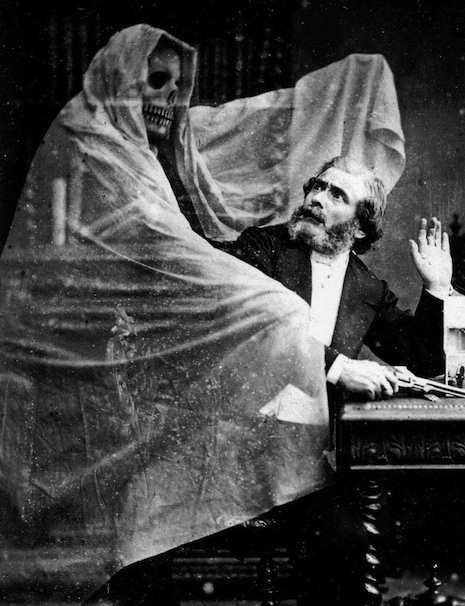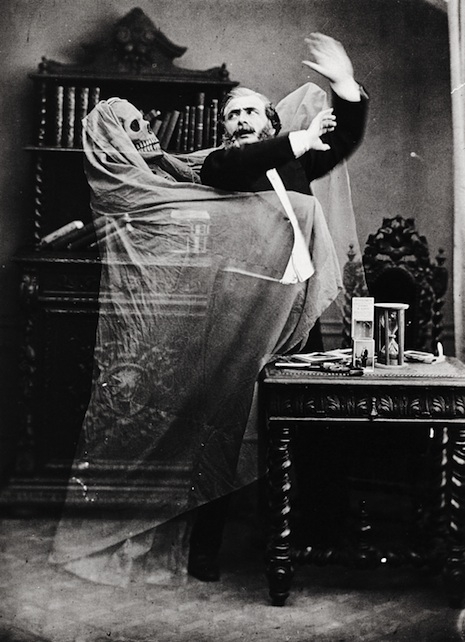
It must be the season—the darkening days, the icy cold, and the fog drawn—here in Scotland at least—like net curtains that has led me to indulge in reading classic ghost stories by M. R. James, Sheridan Le Fanu and Charles Dickens. Late Fall, early Winter is the best time for such tales, with the best stories coming from that golden era of supernatural fiction during Victorian times—roughly 1860-1900—when readers sought a thrill (or perhaps confirmation) of an weird ethereal world. The 19th century interest in ghosts and hauntings was greatly enhanced by a discovery by American William H. Mumler, who chanced upon the potential to create spectral images by use of the double exposure.
Mumler’s “ghost in the machine” brought the contemporary fiction of the supernatural into sharp focus and more importantly allowed him to con sitters into the belief loved ones were present in their lives. Most (in)famously he photographed President Lincoln’s widow with what appeared to be dead Abe looking over her shoulder. Such spirit photography became very popular during the 1860s, and Mumler made a tidy sum conning innocent customers out of their money.
Mumler was eventually rumbled and tried in court for fraud. Though found not guilty, his career as a spirit photographer was finished and he died penniless in 1884. However, Mumler’s trick photography was quickly adopted by other photographers across the world, most notably by Eugène Thiébault who created a series of entertaining spectral photographs—most famously with illusionist and showman Henri Robin.
As had been the case with Mumler, most of these trick photographs were sought by people wanting some kind of reassurance over departed loved ones—something that became even more popular after the slaughter of the First World War.
Here is a small selection of what I think are some of the best double exposure photographs which show its development from basic con to comforter and theatrical promotion to its use as a means of examining human anatomy.

‘Henri Robin and a Specter’ (1863): The illusionist (and ghost debunker) Henri Robin promotes himself in a photograph by Eugène Thiébault.

William H. Mumler’s famous portrait of Abe Lincoln looking down on his bereaved wife Mary Todd Lincoln.
More ghostly double exposures, after the jump…





